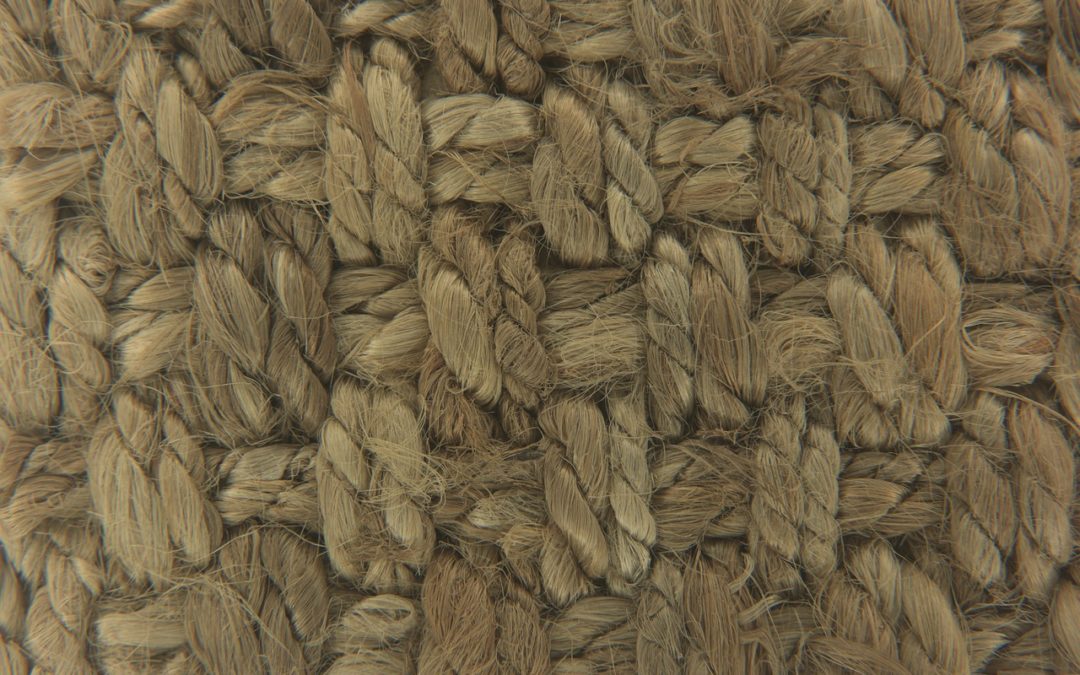Hemp fiber is one of the most valuable parts of the hemp plant. It is made from the “bast”, which is the outer layer of the hemp stalk. This fiber extends the entire length of the plant and can be anywhere between 3 and 15 feet long. Our specialty is a smokable hemp flower, but we are fascinated by how this plant can revolutionize so many industries. It could potentially replace cotton as the main plant fiber for textiles.
Hemp fiber was one of the first plants spun into usable fiber thousands of years ago. It was on pace to be a billion-dollar crop at the turn of the 20th century, but the production of industrial hemp was unfairly handicapped by the Marijuana Tax act of 1937.
Although this tax was a step to federally ban marijuana, it also banned industrial hemp since the hemp plant is in the same family. The Hemp Farming Act of 2018 changed everything. Hemp is now legal to grow, so long as the THC content of the hemp flower is under 0.03%. This bill has the potential to allow hemp fiber to become the primary source material for several industries. We are going to look at the following:
- The harvesting process
- Products made from hemp fiber
- Why industrial hemp is the best source of plant fiber
How is Hemp Fiber Harvested?
The beginning of the harvesting process depends on a couple of factors. Hemp bred and grown specifically for fiber is different from hemp grown for multiple purposes.
The Pre-Harvesting Process
Hemp grown for fiber is harvested between 70 and 90 days after planting. This is early in the flowering stage before seeds and flowers form. Some suggest that bast fibers weaken when the plant enters maturity.
Hemp grown for multiple purposes is harvested once the plant is fully mature at about 120 days. The fiber is most commonly used for hemp paper, rather than textiles. The seeds and flowers are harvested to extract hemp seed oil and sold for smoking, respectively.
Now let’s get into the actual harvesting process. First, the hemp plants are cut down at between 2 and 3 cm above the ground. They are laid out to dry for a few days.
Retting
The next stage is retting. This process breaks down the bonds holding the hemp stalk together. It makes it easier to separate the bast from the hurd, which is the woody core of the stalk.
Small farms without access to industrial equipment practice field retting. The farmers degrade the stalks naturally over 4 to 6 weeks. This is highly dependent on weather conditions and requires daily monitoring.
Natural water retting makes use of a slow-moving or stagnant body of water, like a pond or stream. The hemp stalks are submerged fully for 8 to 14 days and monitored closely for over or under-retting.
Industrial plants use tank water retting. This takes 6 to 8 days, with the only difference being the water source is a tank rather than a natural source. Industrial plants also use enzymes to assist the retting process.
Fiber Separation
Now the hemp fiber is separated from the hurd. A machine called a decorticator removes the bast fiber by crushing the hurds into tiny pieces. This process can be done manually by using fluted rollers, but it is highly labor-intensive.
The plant is then “scutched” to maximize the yield. This process produces 2 fiber types – tow and line fiber.
Tow fiber is a short fiber. It is used for stuffing products like pillows, as well as coarse yarn. Line fiber is the long fiber. It can be anywhere between 3 and 15 feet long. It is cut to the desired size before bailing. Line fiber is then further processed so it can be spun into hemp fabric used in all types of clothing.
What is Hemp Fiber Used For?
Hemp fiber is primarily used for industrial and commercial textiles.
Industrial Textiles
Industrial textiles are source materials. They are used by industries to make their end products. It includes things like:
- Rope
- Twine
- Canvas
- Tarp
- Carpet
- Geotextiles
Hemp rope is more durable and water-resistant than rope made from cotton. Along with hemp canvas, these hemp products were widely used in the era of commercial sailing.
Hemp twine is primarily used to make jewelry and other types of crafts. Like hemp carpet, it is a product usually purchased because it is more eco-friendly and durable than other options.
Geotextiles are used to serve as a buffer between the soil and a man-made structure. They are most commonly used in the process of paving roads. The hemp plant has properties that make it a highly eco-friendly geotextile.
Commercial Textiles
Commercial textiles are the foundation of products sold directly to the consumer. Hemp fiber is used to make hemp fabric, which is then woven into things like:
- Shirts
- Jeans
- Shoes
- Dresses
- Handbags
Quality hemp fabric has a feel similar to linen. It doesn’t have the coarseness associated with early hemp clothing. Hemp also has a long history of being used for denim, as the first pair of Levi’s was made of hemp.
Hemp shoes are growing in popularity. Once a niche item, many big shoe brands now have at least one line of hemp shoes for sale.
Why is Industrial Hemp The Best Source of Plant Fiber?
The Hemp Farming Act is such a potential game-changer because hemp fiber is arguably the best source of plant fiber.
One reason hemp is superior to other sources of fiber is how easy it is to grow. It can grow almost anywhere in the United States and is very friendly to the soil. There are less watering and maintenance than growing cotton. Almost every farmer in the country could start growing and profiting off hemp if the market demand grows enough.
Hemp grows fast, which contributes to the fact that it is resistant to pests and diseases. It also has a low lignin content that allows it to be bleached without the use of abrasive chemicals. By reducing the need for pesticides and bleaching chemicals, hemp fiber is much more environmentally friendly than cotton fiber.
A mass of hemp fiber can produce 3.5% of the weight in line fiber and 1% of the weight in tow fiber. While this is lower than cotton, hemp only takes a third of the time to grow. Other parts of the hemp plant also have value, which makes it a more profitable crop for farmers.
Hemp fiber is more durable than cotton fiber. It is also easier to dye and stretches less. Hemp fabric gets softer the more you wear it.
Final Thoughts on Hemp Fiber
Hemp fiber has a long way to go before it takes over the textile industry. So long as industrial hemp stays legal, it is exciting to imagine where the hemp industry could be in a couple of decades.
We would love to live in a world where the farmers growing our smokable hemp flower could make even more profit by selling off the other parts of the hemp plant.
Drop any of your questions about hemp fiber in a comment. Before you leave, check out our collection of smokable hemp to further indulge your curiosity about this wonder plant.




Recent Comments